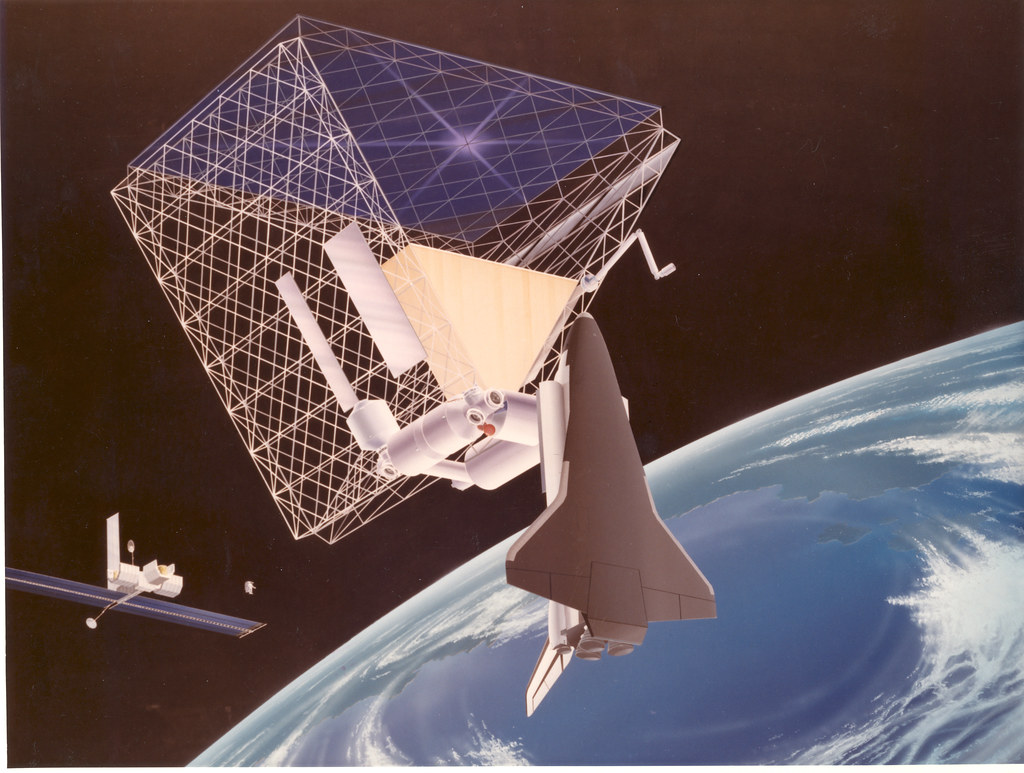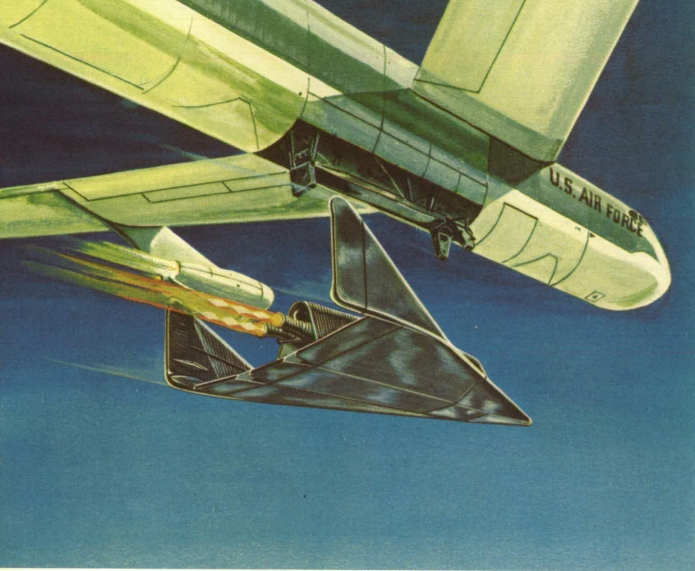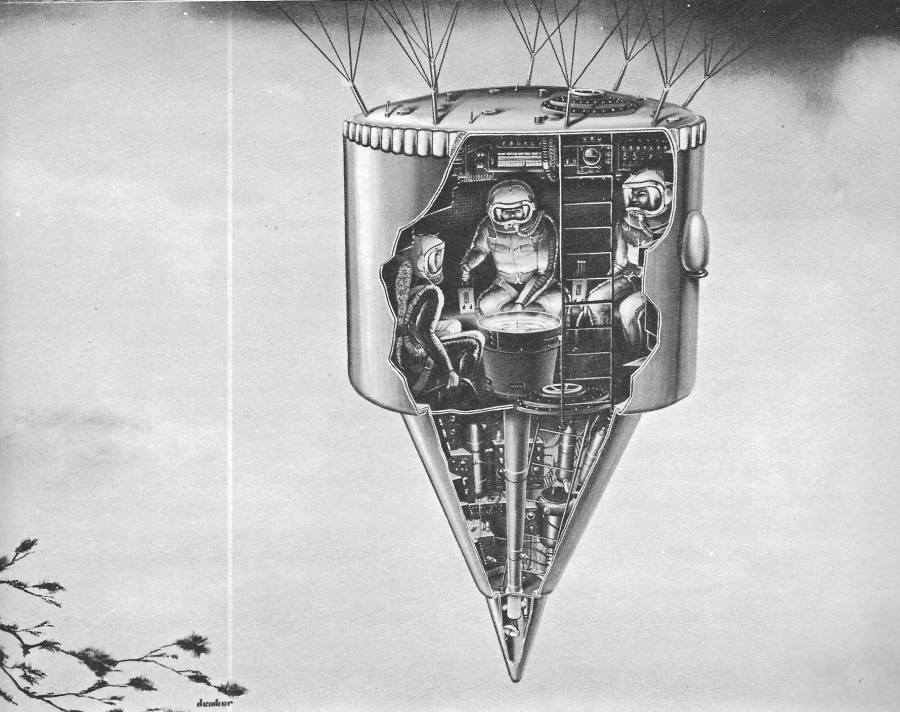The universe is full of places.
NASA has compiled a playlist of “spooky” space sounds (what with it having been Halloween and all) derived from space probes such as Juno and Voyager. I debate the actual spookiness of them, but they are certainly interesting and several are certainly a bit unsettling.
Some NASA art from back in the day. Click to embiggen.


Here’s an odd thought:
Did Ceres once have an ocean?
The dawn spacecraft has detected minerals that seem to indicate that there was once liquid water on the surface. By “once,” that means “4 billion years ago.” The evidence indicates that there is still substantial water bound upon the surface “rock” of Ceres, with the possibility of meaningful amounts of liquid water still existing under the surface.
But with a surface gravity of only 0.029 g, back when it had an ocean it must have been a bizarre place. That’s far too low a surface gravity (more specifically, far too low of an escape velocity) for Ceres to have retained any sort of atmosphere. Air would quickly just… drift away to space. So the ocean must have been in a constant state of near-boiling, with an astonishing evaporation rate. The atmosphere must have been largely water vapor; the atmosphere would blow away, forming a cometary tail likely to have been pretty impressive. This would have been while planets like Earth were still in the process of being formed, so the entire solar system would likely have been a busy place, with *lots* of giant comet-like objects like Ceres.
A rare piece of color art depicting an early Dyna Soar being dropped from a B-52. The Dyna Soar is equipped with two rocket engines used to boost it to higher altitude and higher speed (supersonic, though not very supersonic… think the test flights of the M2-F3 and the HL-10). Note that this shows the Dyna Soar having been tucked into a modified bomb bay in the B-52’s fuselage; planning would soon move the Dyna Soar to under the wing, using the same attachment point used by the B-52 to carry the X-15 and the lifting bodies.
An apparently pre-Mercury “space capsule” design from Rocketdyne. I am somewhat dubious, though… I suspect it might be less “space capsule” than “high altitude capsule.” Nothing about it screams “re-entry vehicle;” rather it look like something that might have been hauled to the edge of space by a large balloon. The pressure suits worn by the occupants look like something to be worn by a U-2 pilot; there sure is a whole lot of wasted volume in there and it would be odd for a capsule meant to operate in zero-g to have a ladder in it.
I’m looking to take quality screenshots, and I think the online versions of the episodes would make for better image quality than screenshots from the DVD burner I use to record episodes. Fox has the episodes available online shortly after they air, but I can’t figure out how to download them to view them on something better than my dinky netbook.
Last nights episode, for example:
https://www.fox.com/watch/68822e236dc85f8578b4354894a471bd/
The Space Review has an interesting piece that attempts to figure out how much BFR might cost to fly. My own estimate: I dunno. Done the old fashioned way, you’d go through a thousand pages of calculations, totaling up all the palm-greasing and bonuses and regulatory hoop-jumping and congresscritter bribes and extraneous R&D and sub-sub-subcontractor troubleshooting… and only then try to figure out what the actual manufacturing and testing and propellant and operations and maintenance will cost. And then tack on an extra zero, because of course you will. But here, SpaceX is operating in a whole new environment. Ten years ago I would have said the BFR would have been a ridiculously, laughably optimistic concept; now… you know, I bet they can pull it off, even if they need to slip the schedule some.
Estimating the cost of BFR
They come up with a conclusion that $240,000 per ton delivered to the surface of Mars is achievable. They also come up with a cost per seat of $1,200 for a point-to-point ballistic transport version stuffing 853 passengers on board, but here I become distinctly dubious. I’d bet real money that even if the technology works fantastically, the regulatory banhammer will come down on SpaceX SpaceLines the moment they try to actually fly passengers. Heck, I bet the US FedGuv will drop ITAR on SpaceX like a ton of white-hot bricks the moment SpaceX seriously proposes to launch a BFR upper stage to some darned furrin country like Japan or Australia, never mind China or Dubai. Plus there will be practical issues which I think stand a *very* good chance of torpedoing an affordable ballistic transport system… passengers keeling over due to acceleration (or being ejected from the boarding line because a doctor says “no”), the sort of delays that space launch systems would find trivial would be monumental for a system meant to operate for only 30 minutes, difficulties getting passengers loaded on board, bad weather at the launch or landing site making it impossible for the vehicle or its booster to safely land… these can all cause a serious headache.
I am much less interested in the global transport aspect than I am in the orbital and interplanetary aspect. Sure, it’d be great to have a half-hour-to-antipodes transporter… but that wouldn’t have one percent the impact that a colony transport to Mars would have.
SpaceX has landed another previously-launched Falcon 9 first stage (it flew a resupply mission to ISS in February). It’s not there yet, but this sort of thing is becoming routine… which is fantastic.
Note that at about the 21 minute mark the grid fins begin to glow white-hot during entry. Which would certainly explain why they switched from aluminum to titanium for those fins.
Posted to a NASA Flickr page is this illustration of a 1984 space station concept:

This would probably be a very heavy station for the volume and usable surface area provided. However, once that truss structure is in place, it seems like it would be possible to keep adding on to it without overly stressing the structure, with the possible result of a very capable station. It should also be possible to keep tacking on new truss elements.
The design would necessarily keep most of the station elements shadowed by the solar arrays.


